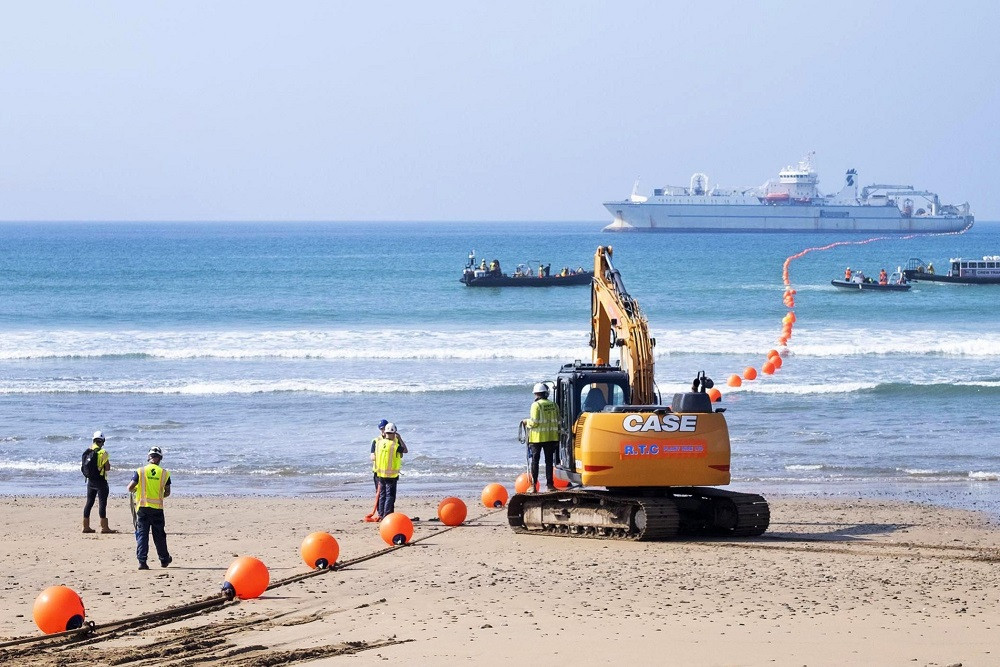
On June 14, the Ministry of Information and Communications approved the "Strategy for Developing Vietnam's International Optical Cable System to 2030, with a Vision to 2035."
This strategy highlights the importance of Vietnam's international optical cable system as a crucial component of digital infrastructure, prioritizing modern investments to ensure super-large capacity and super-wide bandwidth for international connections. The goal is to support Vietnam's aspirations to become a regional data center.
The strategy emphasizes building autonomy in establishing, deploying, and repairing international fiber optic cable lines to ensure the safety of Vietnam's Internet network. It aims to fully meet the international connectivity needs for the development of the digital economy, society, and national defense and security.
State-owned enterprises are encouraged to pioneer the deployment of international fiber optic cables, while domestic and foreign enterprises are promoted to participate in investment and construction, fostering rapid development in Vietnam's international fiber optic cable system.
Strategic visions
By 2035, Vietnam's international fiber optic cable system is envisioned to be among the leading in the region regarding quantity, capacity, and quality. This development is expected to attract investment, support large data centers, and enhance cloud computing services, making Vietnam an integral part of regional and global digital infrastructure.
Diverse, safe, and sustainable connections are planned to make Vietnam a key link in the digital and data transmission infrastructure, propelling the country's digital economy and society.
The strategy outlines the deployment of at least 10 new submarine optical cable lines with modern technology by 2030, bringing the total to at least 15 lines with a minimum capacity of 350 Tbps. At least two of these lines will be owned by Vietnam, directly connecting to regional Digital Hubs.
Vietnam's submarine optical cable system will be strategically deployed to cover all technically feasible directions, including the East Sea to the North and South and the southern sea.
Additionally, at least two more international terrestrial optical cable lines will be operational by 2030, ensuring the total capacity of international terrestrial optical cables reaches at least 15% of the submarine optical cable system's capacity.
Ensuring safety and sustainability

The Ministry of Information and Communications has laid out four groups of solutions to achieve these goals: Organization and apparatus; Domestic cooperation; International cooperation; and Research and development.
By 2027, Vietnam aims to deploy and operate four new submarine optical cable lines, increasing the total capacity to at least 134 Tbps. These efforts will maintain key Digital Hubs in Singapore, Hong Kong, and Japan, with periodic reviews to adjust connection points as necessary.
From 2028 to 2030, six more submarine optical cable lines will be deployed, including one owned by Vietnam, increasing the total designed capacity to at least 350 Tbps. Additionally, another international terrestrial optical cable line will be operational, ensuring diverse and robust connections.
The strategy emphasizes the importance of deploying plans for direct connections to Digital Hubs and joint venture models for southern sea optical cable lines. Multi-directional connections to multiple Digital Hubs will be prioritized, with periodic reviews to ensure balanced connection directions.
To manage sudden demand growth, a plan to quickly deploy new submarine optical cable lines within two years will be developed. The Department of Telecommunications is tasked with synthesizing and implementing the strategy, with periodic reporting and reviews to adjust and enhance key tasks.
Currently, Vietnam has two land cables connecting to Hong Kong and Singapore with a total capacity of 5 Tbps and five international submarine optical cable lines with over 20 Tbps in use and a total available capacity of 34 Tbps.
On average, 15 submarine optical cable incidents occur annually, with repair times ranging from 1-3 months per incident. At times, incidents have resulted in a 60% loss of international Internet connection capacity for nearly two months.
PV